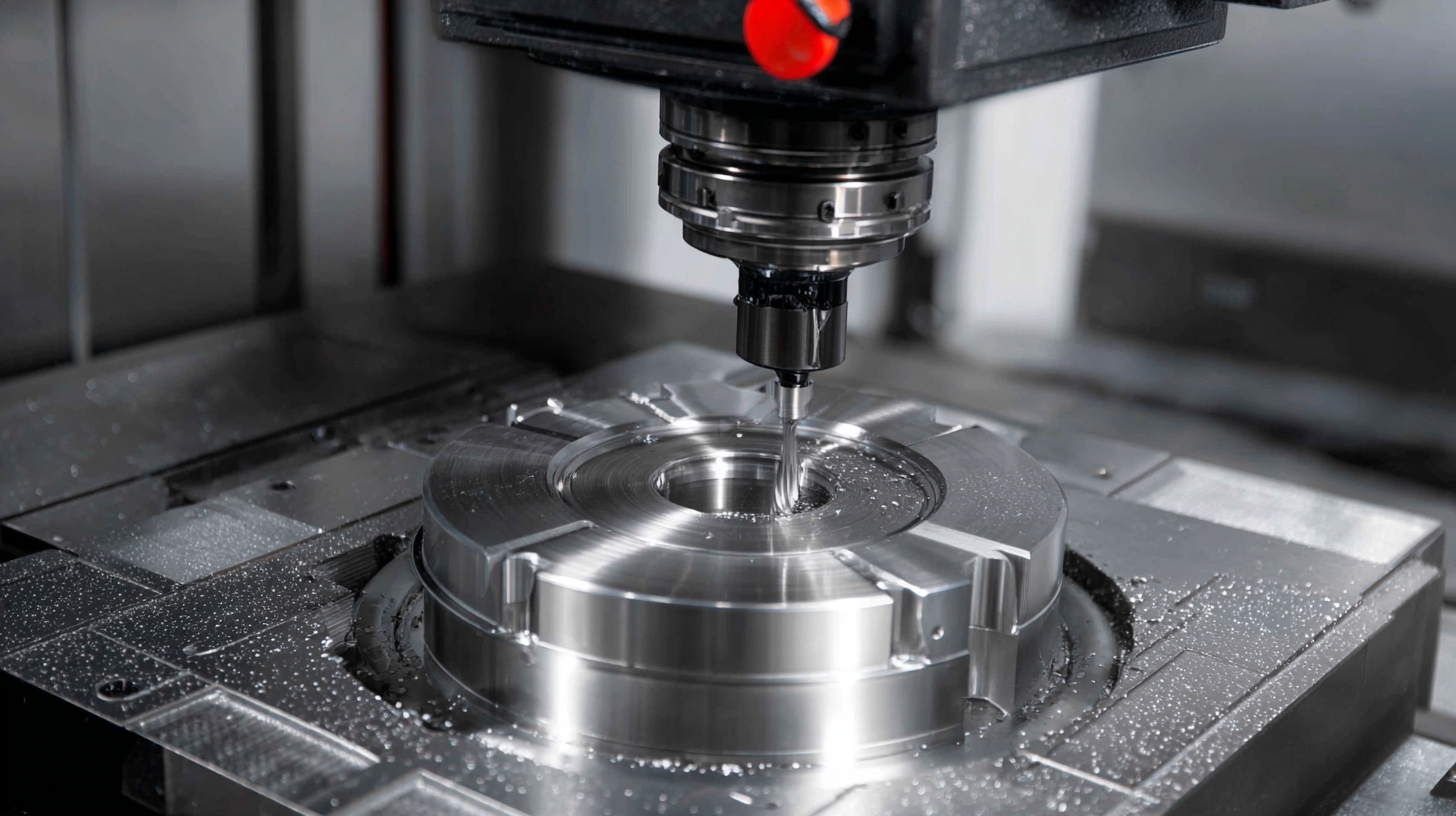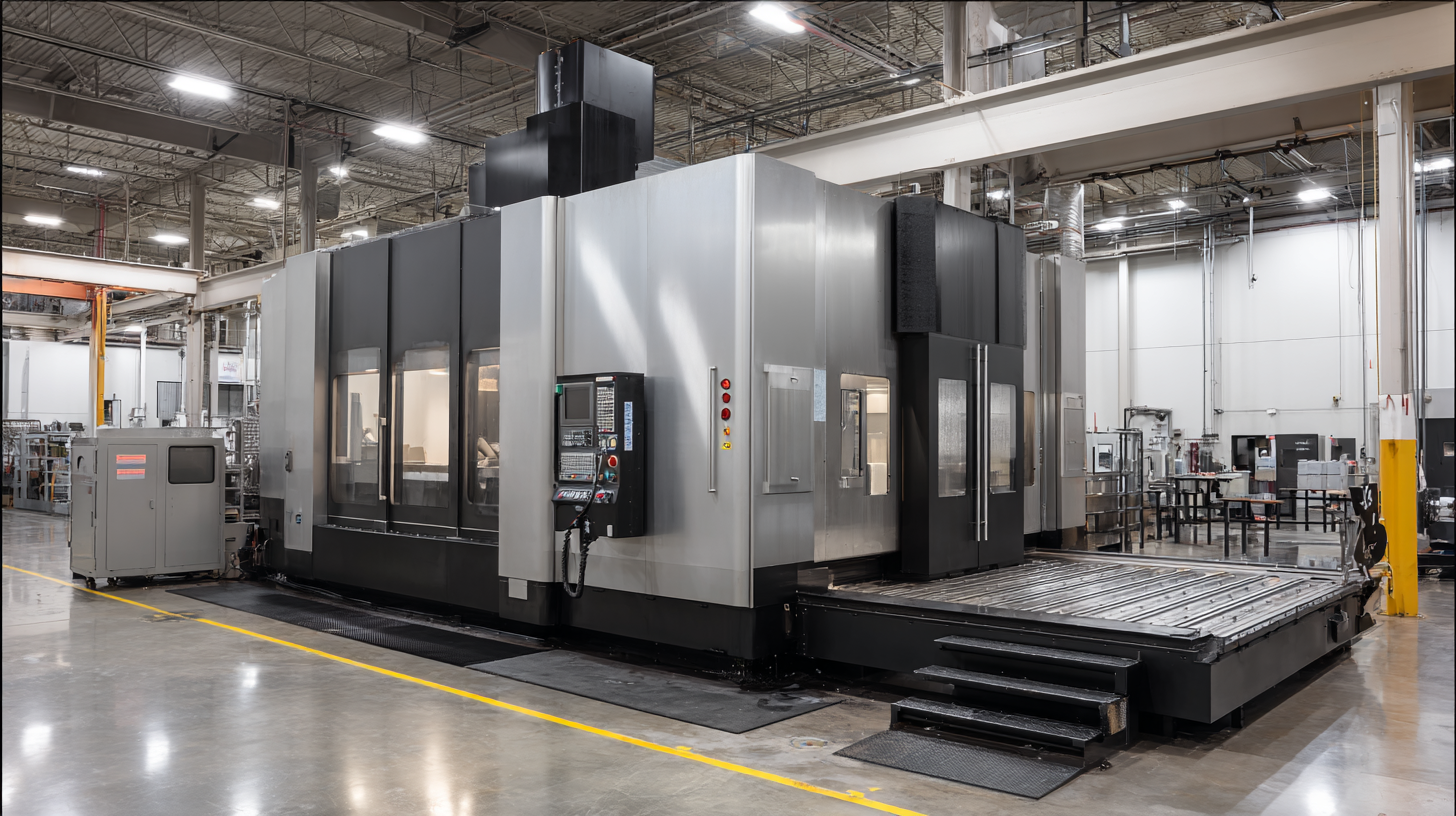Understanding the Benefits of Large Part CNC Machining for Precision Manufacturing
In the realm of precision manufacturing, "large part CNC machining" has emerged as a crucial technology, enabling manufacturers to achieve high accuracy and efficiency in the production of substantial components. As per a report by the Reshoring Initiative, utilizing CNC machining methods in large part production can enhance operational efficiency by up to 30%, significantly reducing production time and costs. Moreover, a study conducted by MarketsandMarkets indicates that the CNC machining market is projected to reach $117.2 billion by 2026, reflecting the growing demand for precision components across various industries including aerospace, automotive, and industrial machinery. This trend underscores the importance of understanding the distinct benefits that large part CNC machining offers, from improved tolerances to the ability to handle complex designs, making it an indispensable part of modern manufacturing strategies.

How to Choose the Right CNC Machining Technology for Large Parts
Choosing the right CNC machining technology for large parts is critical in achieving precision and efficiency in manufacturing. When selecting a CNC system for large components, consider factors such as the material being machined, the complexity of the part, and the desired tolerances. Different technologies, such as milling, turning, and 3D machining, each have unique strengths. For example, CNC milling is highly effective for intricate designs, while CNC turning excels in producing cylindrical shapes. Understanding these capabilities will help manufacturers align technology with their specific needs.
Additionally, evaluate the capabilities of the CNC machine itself, including spindle speed, feed rate, and tool change automation. Machines that offer adaptive control systems and visual feedback can significantly enhance cycle times and reduce waste. Furthermore, consider the software used for programming and simulation, as advanced software solutions can optimize machining paths and identify potential issues before production begins. By thoroughly assessing these factors, manufacturers can ensure they choose the most suitable CNC machining technology for their large parts, ultimately improving productivity and precision in the manufacturing process.

How to Optimize Material Selection for Large Part CNC Machining
Large part CNC machining offers tremendous benefits for precision manufacturing, especially when it comes to optimizing material selection. As the global CNC machine market is projected to grow significantly, from $101.22 billion in 2025 to $195.59 billion by 2032 with a compound annual growth rate (CAGR) of 9.9%, the importance of efficient material choices becomes paramount. Selecting the right materials not only impacts the manufacturing process but also the final performance and durability of the produced components.
In the context of automotive component development, which is characterized by its complex multi-stage process, appropriate material selection at each critical phase is essential. Each material has its unique set of properties that can enhance or hinder performance based on the application. For instance, lightweight alloys are often favored for parts requiring reduced weight without compromising strength, while certain composites may be employed for their exceptional stability under high stress. With advancements in CNC machining technology, manufacturers are now able to optimize these selections to achieve the best balance between cost, efficiency, and product quality.
How to Ensure Precision and Accuracy in Large Part Production
Large part CNC machining is essential in ensuring precision and accuracy in the manufacturing sector, especially as industries seek to meet the growing demand for larger components. According to industry reports, the global machine tool market is projected to expand from $132.63 billion in 2025 to $229.46 billion by 2032, indicating a compound annual growth rate (CAGR) of 8.1% during this period. This growth reflects the increasing reliance on advanced machining technologies capable of producing complex, high-precision parts necessary for industries such as aerospace and automotive.
To achieve the required precision in large part production, manufacturers must invest in high-quality CNC machining equipment and adopt rigorous quality control measures. Innovations in liquid metal 3D printing and other advanced manufacturing techniques, highlighted in MIT's 2024 influential research, underscore the importance of integrating cutting-edge technology to enhance manufacturing accuracy. As precision becomes paramount, overcoming the "0.01 mm" barrier in machining processes, as discussed by industry experts, will be crucial for staying competitive in the global market. These advancements not only improve production efficiency but also ensure that the components meet stringent safety and performance standards.

How to Reduce Lead Times in Large Part CNC Machining Projects
In the rapidly evolving landscape of precision manufacturing, reducing lead times in large part CNC machining projects is critical for meeting the increasing demands of various industries. According to a recent report by the Association for Manufacturing Technology (AMT), companies that utilize advanced CNC machining techniques have reported a 30% reduction in lead times while improving overall product quality. This efficiency is primarily attributed to the integration of automated systems and real-time monitoring tools that optimize machining processes and minimize downtime.
Furthermore, implementing lean manufacturing principles can significantly enhance the efficiency of large part CNC machining operations. A study published in the Journal of Manufacturing Science and Engineering highlighted that firms adopting lean methods saw lead time reductions of up to 50%. These strategies focus on streamlining workflows, reducing waste, and improving communication among teams, ultimately leading to faster turnaround times. By investing in employee training and adopting innovative technologies, manufacturers can position themselves to respond more efficiently to client demands, solidifying their competitiveness in the market.
Lead Time Reduction in Large Part CNC Machining Projects
How to Implement Effective Quality Control Measures for Large Parts
Effective quality control measures are crucial in large part CNC machining, where precision is paramount. Industry reports highlight that approximately 70% of manufacturing defects are attributed to inadequate quality control processes. Implementing comprehensive quality assurance protocols can significantly reduce scrap rates and enhance overall production efficiency. Techniques such as Statistical Process Control (SPC) allow manufacturers to monitor and control critical dimensions in real-time, ensuring that parts adhere closely to specifications.
To effectively implement quality control for large parts, manufacturers should incorporate advanced inspection technologies, such as laser scanning and coordinate measuring machines (CMM). According to a recent study by the American Society for Quality (ASQ), organizations that utilize CMM for dimensional inspection report a 30% decrease in production downtime related to quality issues. Additionally, fostering a culture of continuous improvement within the workforce can empower employees to identify potential quality concerns proactively. By leveraging these strategies, precision manufacturers can ensure that their large CNC machined parts not only meet but exceed quality standards, driving long-term success in the competitive market.
Understanding the Benefits of Large Part CNC Machining for Precision Manufacturing - How to Implement Effective Quality Control Measures for Large Parts
| Feature | Description | Benefits | Quality Control Measures |
|---|---|---|---|
| High Precision | CNC machining delivers high accuracy for large parts. | Reduced material waste and improved fit. | Regular calibration of CNC machines. |
| Complex Geometries | Capability to manufacture intricate designs. | Ability to meet diverse engineering requirements. | Implement CAD/CAM software for design verification. |
| Material Versatility | Can work with various materials including metals and plastics. | Flexibility in production processes. | Material testing and certification before processing. |
| Scalability | Easily scale production from prototype to large batches. | Cost-effective for large-scale manufacturing. | Implement statistical process control (SPC). |
| Reduced Lead Times | Faster production compared to traditional methods. | Increased competitiveness in the market. | Establish clear timelines and follow up during production. |
